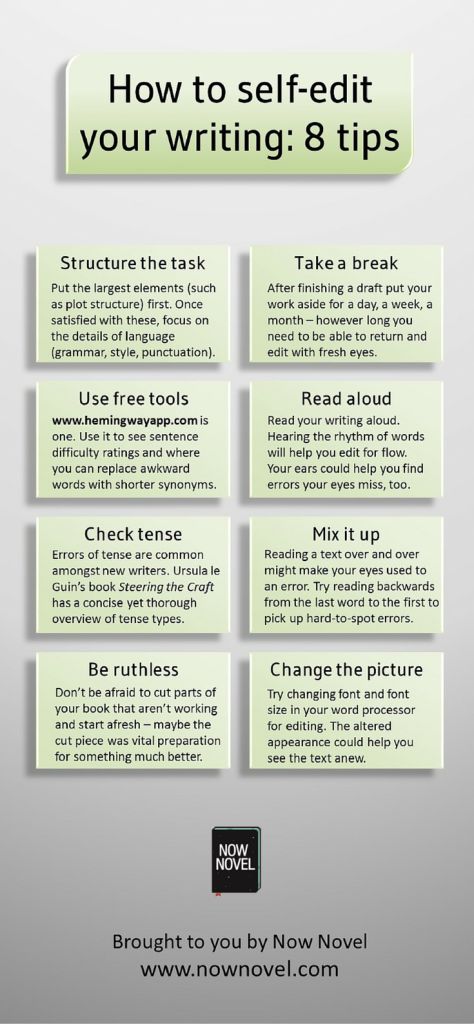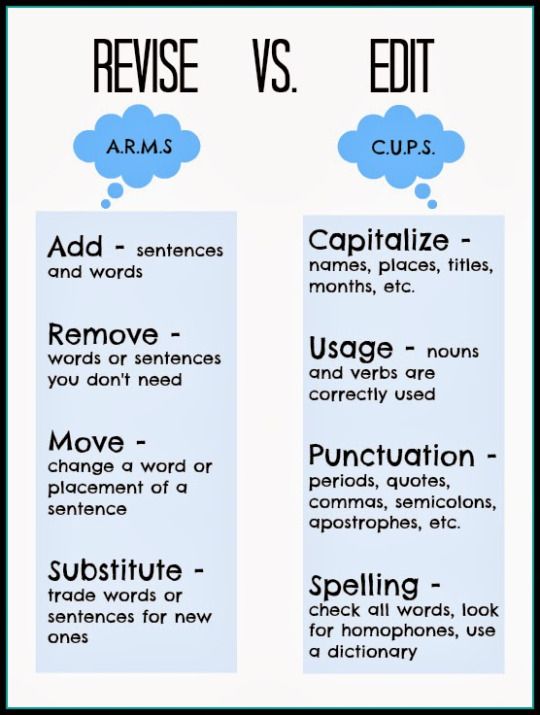Writing an academic paper is always just the halfway of having your assignment done. Without having revised, edited, and proofread your document, it remains a mere draft. A thorough revision and a scrupulous proofread is the key to a well-polished immaculate college paper. Here in this article, we’ll explain why editing and proofreading requires so much time and attention, as well as explore the ways in which you can improve your papers.
Editing vs. Proofreading
First of all, let’s see how editing is different from proofreading. Mainly, editing refers to making substantial changes to a paper we are working on. You don’t just check minor issues, but review the entire document, see that its structure is solid and logical, pay attention to the way your sentences are constructed. On the other hand, proofreading refers to checking such things as grammar, punctuation, and spelling. Being more of a cosmetic clean-up, proofreading usually follows editing.
Why Is It Hard to Edit and Proofread Our Own Papers?
You must have noticed that it’s harder to review and amend our own text than that of our peers. There is an explanation for this. Our brain reads the text we have written as we were supposed to write it, rather than as it appears in the document. The structure flaws simply slip our mind because we don’t see the way the sentences are written, but rather recall the way we intended to write them. The same applies to argumentation: we don’t need to convince ourselves, as we already believe our own statements — this makes it hard for us to track our logical fallacies.
We have a lot of trouble doing a good job when proofreading our own papers. We tend to overlook typos and mistakes simply because they don’t exist in our minds. We often miss mistakes in the text that we read for the first time simply because we don’t have to read every letter to perceive the information. With a familiar text, we do a lot worse job than that.
In spite of the above, we still can (and also must) do as thorough editing and proofreading job as possible when it comes to our own academic papers. To do this well, we need two things — practice and attention.
Some General Tips

Before we view the techniques for editing and proofreading, let us see what we can do to make our papers shine.
- Always proofread;
- Editing and proofreading are different processes;
- Edit first and proofread at the end;
- Track changes using writing software;
- Let your college paper cool down;
- Use grammar checking tools wisely;
- Go through your work more than once;
- Do the proofreading and editing when you are well-rested;
- Exercise your grammar skills to keep them sharp;
- Check punctuation;
- Ask someone to read your paper;
- Consult an academic style guide.
Always Proofread
Make it your habit to review and proofread all your papers before submitting them. This might be time-consuming, but it’s never wasted time. Editing is also a skill: the more you practice, the better your skills get.
Editing and Proofreading Are Different Processes
Learn to distinguish between the two processes. Editing should come before proofreading and concern the entire document, its logic, structure, and style. Proofreading comes after and involves a series of spell- and grammar checks.
Edit first and Proofread at the End
Like said above, dedicate some time first to review and reconsider the structure of your paper. Then move to the paragraphs, and then view individual sentences. After you’ve made the necessary amendments, see if your grammar in right and your commas in place.
Track Changes Using Writing Software
This tip is especially useful for beginners, but can be also considered by seasoned editors. Turn on the “revision” mode if working in Microsoft Word or the “suggesting” mode when dealing with Google Docs. This way, you will easily track your corrections and suggestions, and will be able to discard certain changes in one click if necessary. This will also help you see your common mistakes and make it easier to avoid them in the future.
Let Your College Paper Cool down
Don’t edit or proofread your paper right after you’ve finished writing. Let it to “cool down” for some time. This way, you’ll distance from it a little, so that you’ll be more attentive to the fallacies, mistakes, and typos.
Use Grammar Checking Tools Wisely
Use grammar checking instruments, such as built-in correction tools or standalone apps like Grammarly. However, don’t rely on them completely. Be sure to double-check everything yourself.
Go through Your Work More than Once
Make it a rule to review your papers multiple times. You’ll likely to miss some mistakes during the first revision. Besides, editing and proofreading are separate processes: don’t mix them for the better result.
Do the Proofreading and Editing When You Are Well-Rested
When you are tired, you cannot stay really focused. Be sure that you’ve rested your eyes and brain before you continue with the proofreading.
Exercise Your Grammar Skills to Keep Them Sharp
Your worst enemy is your common mistakes. We are all likely to miss them when editing our documents. Consult grammar manuals and guides to boost your proofreading skills.
Check Punctuation
Punctuation is as essential as grammar. Pay attention to every punctuation mark. Make sure that you don’t have comma splices in your sentences, that you use colons and semicolons correctly, and that you distinguish n-dashes from m-dashes.
Ask Someone to Read Your Paper
Another great tips would be to simply ask another person to view your paper. Maybe they will provide a valuable feedback on the general look and feel of your paper, or maybe they will notice your common errors to which you’ve been inattentive.
Consult an Academic Style Guide
Finally, you always need to keep your academic style guide (MLA, APA, Chicago, or other) at hand. In it, you will find answers on how to deal with the most tricky punctuation and structure-related issues, as well as on how to tackle the references.
Editing & Proofreading Techniques

Above, we’ve overviewed the essentials of editing your academic papers and some tips regarding the editing process. Now, let’s move on to some good techniques that you can apply.
- Read aloud when editing. It will help you stay focused and distanced from your paper. As an alternative, you can try to record yourself while reading and listen once again to the recording to see how the paper reads.
- Don’t edit large papers at once. Remember that, once you get tired, you stop paying that much attention. Make breaks, drink coffee or even have a nap, and get back to your writing.
- Read the paper backwards. This technique breaks the familiarity. It will help you to see the separate parts of your document and be more attentive to each.
- Modify the look of your paper to break the familiarity. Use a different font, color, or layout. Copy and paste the text into a different word processor. This way, you’ll look at your documents afresh.
- Print out the document. Then use a pen for editing and proofreading to make the process more physical and keep your corrections for future reference.
- Start with the most evident elements. Check titles, heading, subheadings, endnotes first. This will be a nice start for you, especially if you’re short of time.
- Pay attention to your error patterns. Use the “find” tool to track the most frequent mistakes that you make. You can also make a list of the most frequent errors and keep it at hand.
- Circle punctuation marks. This way, you will be able to track them better, see the structure of the sentences, and break the text in small semantic chunks.
- Improve readability of your writing. Shorten sentences, remove filler words, replace passives with actives, or negatives with synonymous positives.
Your Final Checklist
After you have applied a number of editing and proofreading techniques and used some helpful tips, what’s there left to do? See the checklist below to make sure you’ve covered everything.
- Is the structure of your paper logical?
- Do you have transitions between the paragraphs?
- Is the document readable? Can you maintain focus when reading your paper?
- Are the sources paraphrased or summarized in the paper?
- Are quotation marks used for direct quotes?
- Have you adhered to the capitalization rules?
- Are the punctuation marks in place?
- Are the words properly spelled?
- Did you use the correct tense for all your verbs?
- Are all sources acknowledged?
- Is the reference list complete and accurate?
- Did you format the references properly, in accordance to your academic style guide?
Once you’ve answered these checklist questions positively, then you are ready to submit your paper. Good luck with the grade and keep up with the good work editing!

